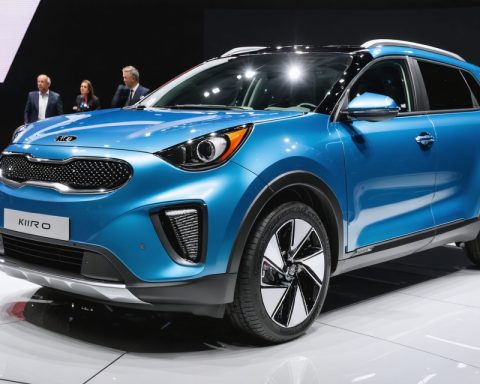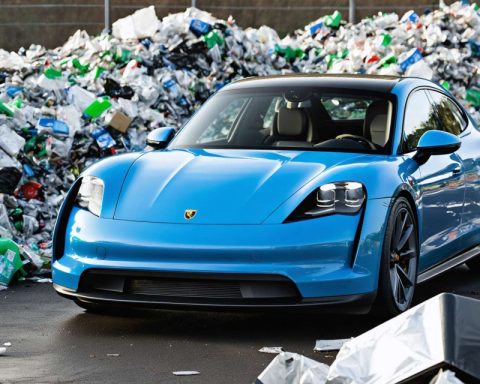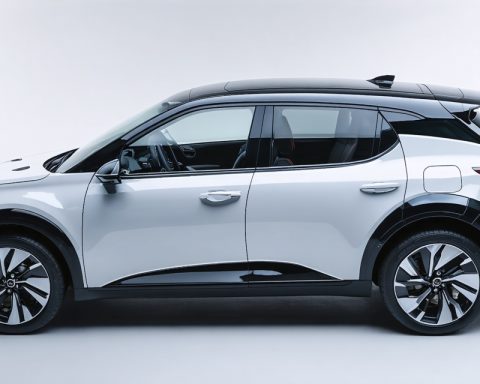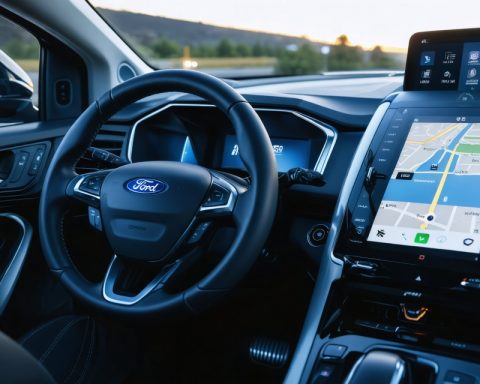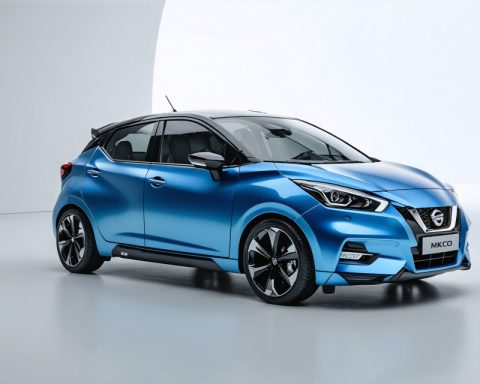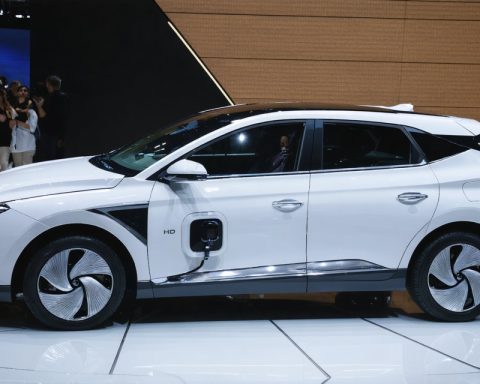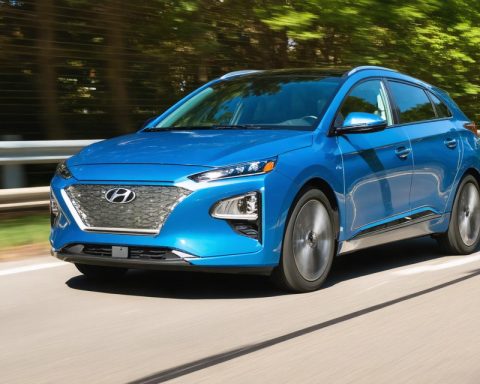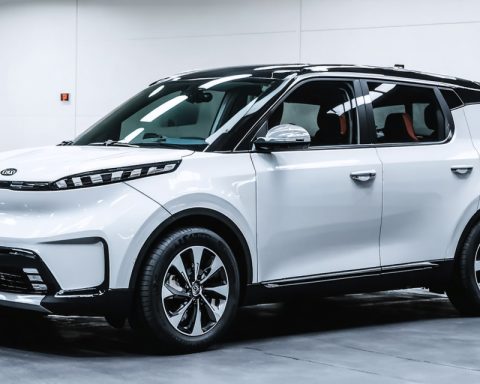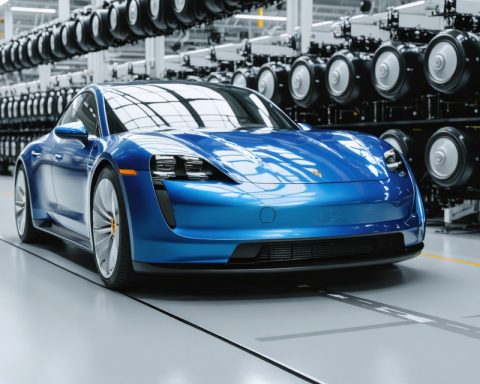- Electric vehicles (EVs) are pivotal in creating exhaust-free, cleaner urban environments, addressing climate change, and reducing noise pollution.
- Government incentives, such as tax breaks and subsidies, are accelerating the adoption of EVs globally.
- Advanced technology, including improved lithium-ion batteries and charging infrastructure, is making EVs more accessible and practical for urban use.
- Smart features in EVs, like intelligent navigation, enhance driving efficiency and convenience.
- Car-sharing and ride-sharing services, facilitated by EVs, are redefining car ownership and promoting sustainable urban living.
- Despite challenges in battery life and infrastructure, cities like Oslo and Amsterdam exemplify successful electrification of urban transport.
- The shift to EVs represents a broader paradigm change in urban mobility, focusing on sustainability and improved quality of life.
The cityscape buzzes with the hum of innovation as electric vehicles (EVs) glide quietly through traffic-clogged streets. Picture this: exhaust-free boulevards, cleaner air, and a transportation system designed with sustainability at its core. Electric cars aren’t just a trend; they are the vanguard of a new epoch in urban mobility.
Clad in sleek designs and armed with cutting-edge technology, EVs are transforming how we traverse urban environments. With growing concerns over climate change and urban pollution, cities worldwide are embracing these vehicles to reduce their carbon footprint. Powerful incentives from governments, including tax breaks and subsidies, are propelling this shift at astonishing speeds.
Silent Streets and Greener Horizons
Electric cars, whisper-quiet as they glide along, drastically cut noise pollution—a blessing in bustling cities where noise is part of the daily grind. Imagine stepping onto a sidewalk where the loudest sound is the rustling of leaves and the soft purr of an electric motor. Streets become quieter, calming the nerves and enhancing the quality of urban life.
Moreover, these zero-emission vehicles promise a cleaner environment. EVs release no exhaust fumes, significantly improving air quality. According to the International Council on Clean Transportation, EVs can dramatically reduce urban air pollution, which contributes to a myriad of health issues. For cities grappling with smog and respiratory diseases, electrifying transportation offers a breath of fresh air—literally.
The Tech Frontier
Innovation fuels the EV market at a blistering pace. Advanced lithium-ion batteries extend driving ranges, reduce charging times, and lower costs. Charging infrastructure evolves rapidly, with more charging stations sprouting in city centers and public areas, transforming fueling into a simple, everyday activity. Some cities are even experimenting with wireless charging embedded in streets, promising a future where cars charge as they drive.
Smart technology further enriches the EV experience. Modern electric cars come equipped with intelligent navigation systems that optimize routes for efficiency and convenience. Consider the Tesla Model 3 or Nissan Leaf, which regularly update routes based on real-time traffic data, making journeys smoother and faster.
Rethinking Car Ownership
The rise of EVs also shifts perceptions of car ownership. Urbanites increasingly adopt ride-sharing and car-sharing services, facilitated by electric fleets. Companies like Zipcar and Car2Go champion this model, allowing people to access cars without the burdens of ownership. An EV-driven sharing economy could free up valuable urban space, reduce the number of cars, and promote a lifestyle rooted in sustainability and practicality.
Challenges and Takeaways
While electric vehicles herald profound changes, challenges remain. The quest for longer battery life, faster charging, and sufficient charging infrastructure continues. Yet, the momentum is undeniable. Cities like Oslo and Amsterdam lead by example, almost reaching complete electrification of urban transport.
The transition to electric cars is not merely an adjustment in technology—it’s a paradigm shift in how we envision our cities. As more urban areas embrace electrification, the promise of cleaner skies, quieter streets, and healthier lives becomes not just a possibility but a reality in the making. Indeed, the future of urban mobility hums with electric potential.
In conclusion, embracing EVs means investing in a future of sustainable, efficient, and people-oriented urban transportation, paving the way for cities to thrive in harmony with the environment. Such progress becomes a template for other regions worldwide, creating a ripple effect that resonates with the promise of a brighter, cleaner tomorrow.
The Electric Vehicle Revolution: Changing Cities, Changing Lives
Introduction
Electric vehicles (EVs) represent more than just a mode of transportation; they symbolize a transformative shift in urban mobility and sustainability. As cities worldwide adopt EVs to tackle challenges like carbon emissions and noise pollution, the landscape of urban life is evolving. In this article, we’ll delve deeper into facets not fully explored, including market forecasts, technological innovations, and the socioeconomic impacts of widespread EV adoption.
Real-World Use Cases and Market Forecasts
Global sales of electric cars have surged dramatically, with projections indicating that EVs could make up 58% of passenger car sales by 2040 (source: BloombergNEF). Countries like Norway and the Netherlands are leading the charge with high EV adoption rates, setting benchmarks for other nations. As infrastructure improves, even emerging markets may witness rapid adoption, advancing global electrification efforts.
Technological Advances: Beyond Lithium-Ion
While lithium-ion batteries currently dominate, solid-state batteries are on the horizon, promising higher energy densities, faster charging times, and improved safety. These advancements could revolutionize the industry, making EVs even more appealing. Companies like Toyota and QuantumScape are pioneering these efforts, driving battery innovation forward.
The Rise of Charging Infrastructure
The global expansion of charging networks is critical to EV adoption. Innovative models, such as fast-charging hubs and solar-powered stations, are emerging. For instance, ChargePoint and Shell Recharge are developing extensive networks across Europe and North America, addressing range anxiety—a major barrier for potential EV users.
Controversies and Limitations
Despite their advantages, EVs face challenges. The environmental impact of battery production, mining for raw materials, and the recyclability of batteries are points of contention. Additionally, disparities in charging infrastructure between urban and rural areas can create accessibility concerns. These issues underscore the need for sustainable and equitable solutions.
The Sociocultural Shift Toward Mobility as a Service (MaaS)
EVs are intertwined with the shift toward Mobility as a Service (MaaS), where urbanites favor access over ownership. This model, propelled by companies like Uber and Lyft, redefines convenience, reducing the need for private vehicles and, consequently, lowering urban congestion and emissions.
Insights & Predictions: The Road Ahead
– Increased Autonomy: The convergence of autonomous driving technologies with EVs will redefine urban transportation, making streets safer and more efficient.
– Government Policies: Expect tighter regulations on internal combustion engines, pushing manufacturers toward electrification.
– Consumer Demand: As EVs become more affordable and culturally accepted, traditional fuel vehicles may become obsolete in certain regions.
Quick Tips: How to Prepare for the Electric Future
1. Explore Incentives: Many governments offer rebates and tax credits for EV purchases—take advantage of these savings (source: U.S. Department of Energy).
2. Plan Charging Access: If considering an EV, ensure access to home or public charging solutions for convenience.
3. Stay Informed: Follow developments in battery technologies and policies that may affect EV markets and infrastructure.
In embracing electric vehicles, individuals contribute to a collective shift towards a sustainable future. For more information on electric vehicles and sustainability trends, visit the Tesla and Nissan websites.
Electric vehicles are more than a trend; they are a pivotal force in reshaping our urban landscapes and lifestyle. As the world pivots towards this electric future, staying informed and prepared will empower individuals to navigate and drive in a cleaner, greener world.

